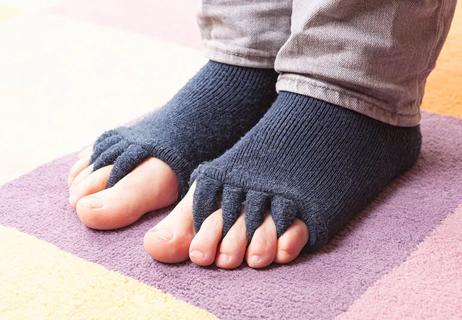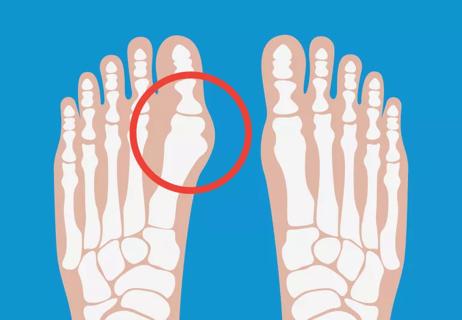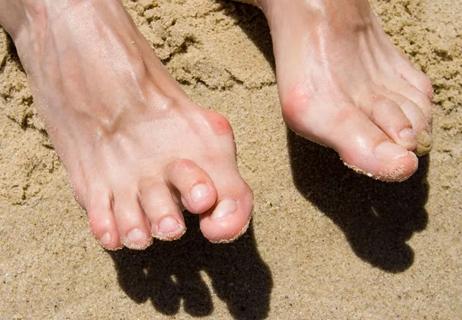Injuring a toe is painful, but is it a serious problem? Find out when to see a doctor and what to do to help your toe heal at home.

Maybe it happened while stumbling around your house barefoot in the dark or while running up a flight of stairs. But we’ve all done it: stubbed a toe hard. In those first few moments of blinding pain, you might wonder if you have a broken toe.
Advertisement
Cleveland Clinic is a non-profit academic medical center. Advertising on our site helps support our mission. We do not endorse non-Cleveland Clinic products or services. Policy
For most of us, thankfully, the pain subsides, and things get back to normal quickly. But if the pain persists, resist the temptation to tape up your toe, swallow some pain relievers and ignore it. “If you’re worried that you may have broken a toe, get it evaluated by a medical professional,” says sports and medical orthopaedist Dominic King, DO.
Your toe bone may have been pulled out of proper alignment or pushed into an odd angle. And if so, a healthcare provider should correct this, Dr. King says. Even if it’s a simple fracture, your toe could heal improperly and cause problems down the road, such as arthritis.
A bruise on the bone can feel similar to a break, Dr. King says. “The most obvious sign that it’s a fracture is if the painful toe is pointing in a different direction than your other toes. Sometimes, it’s obvious that one toe is pushed out to the side, but it can also be a subtle twisting that turns the toe up a little bit.”
Other symptoms that indicate it’s a broken toe include:
What to do for a broken toe at home
Many people reach for ice and pain relievers to soothe painful injuries. But that’s not the most helpful if you have a broken toe, advises Dr. King. “Icing the toe can slow blood flow, and anti-inflammatory medications decrease inflammation; however, you actually need that inflammation for healing. So, it’s best to allow the natural healing response to take place, keep the foot elevated and take a medication like Tylenol® for pain relief, if you have no medical contraindications.”
Advertisement
Follow these steps immediately following injury and seek medical attention right away if you notice the following in your toe:
Otherwise, it’s safe to wait a day or two to see if the pain subsides. If it persists, see a doctor. An X-ray can determine if you have a fracture, what type and how to treat it.
The most common toes to break are the fourth and fifth toes, Dr. King says. Typically, those fractures are simple, and the pieces of bone are still aligned. For those cases, doctors usually recommend wearing a fracture shoe.
“It’s not a big boot. You still have mobility, but the hard sole doesn’t bend. It allows you to walk around without putting pressure on your toes,” explains Dr. King. The fracture shoe keeps your toes immobile so the bones can knit back together in the proper position.
However, a broken bone that isn’t lined up needs adjustment. Your doctor may numb the toe and then straighten it before putting your foot in a fracture shoe. And in some rare instances, you may need surgery — like if there’s significant misalignment of the bone or a break that extends through the bone into one of the joints.
The go-to for a broken toe is typically a fracture shoe, not taping it, Dr. King says. “We tape fingers more than we tape toes. Usually, a fracture shoe is what works best. But occasionally, a doctor may determine that taping is the right step.”
However, don’t try doing it at home without seeing a doctor first. Taping a suspected broken toe can actually prevent healing by pulling apart the bone fragments, Dr. King says. If your doctor recommends taping, then your provider will show you how to tape a broken toe correctly. Typically, you tape the little toe to the fourth toe, and the uninjured toe acts as a splint.
You’ll have much less pain after four weeks and should be walking normally again after eight weeks, Dr. King says. At 12 weeks, your broken toe should be fully healed. You can get back to regularly exercising, including running and jumping.
Toe injuries are pretty normal. But if it looks like your toe is broken, it’s best to have a doctor check it out. That way, you can be sure it heals properly, and you can get back to doing your everyday activities pain-free.
Advertisement
Learn more about our editorial process.
Advertisement

Some things you find in your house have antifungal properties — but that doesn’t mean they’ll clear your toenail fungus

Wearing shoe inserts, maintaining a healthy weight and using cold or heat therapy may give you relief

Toe spacers and separators can add some comfort, but they’re not a fix-all

The short answer from an orthopaedic surgeon

Understanding hammertoe, mallet toe and claw toe

Plus, ways to keep your bones healthy and strong!

Bone health starts with proper nutrition, exercise and healthy lifestyle choices

Cramps can creep up if your shoes are too tight, you’re dehydrated or you have poor circulation

If you’re feeling short of breath, sleep can be tough — propping yourself up or sleeping on your side may help

If you fear the unknown or find yourself needing reassurance often, you may identify with this attachment style

If you’re looking to boost your gut health, it’s better to get fiber from whole foods